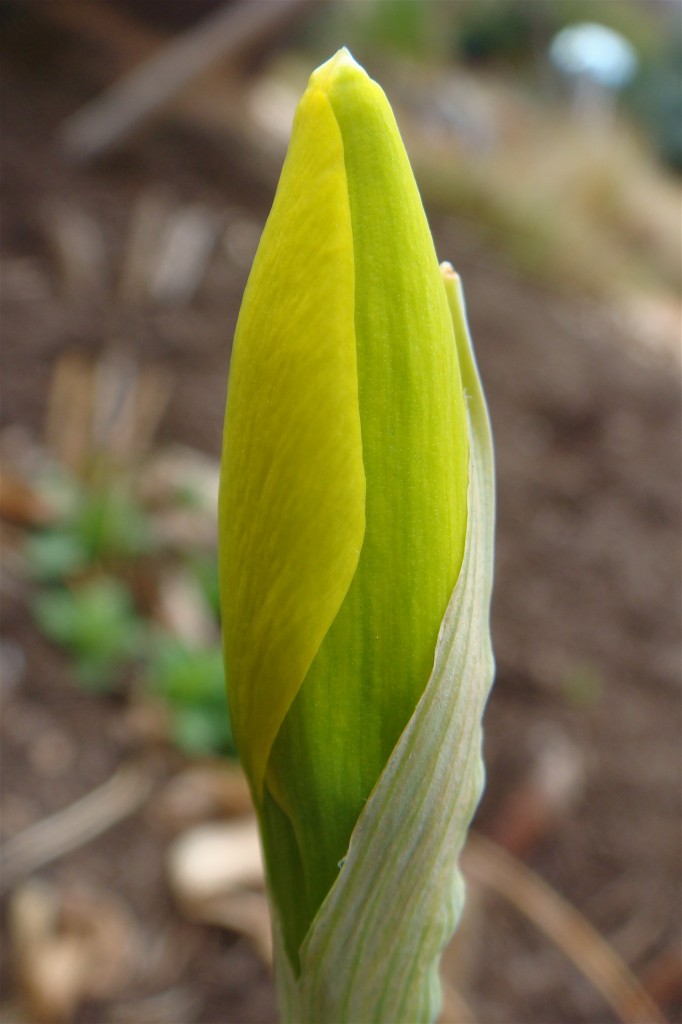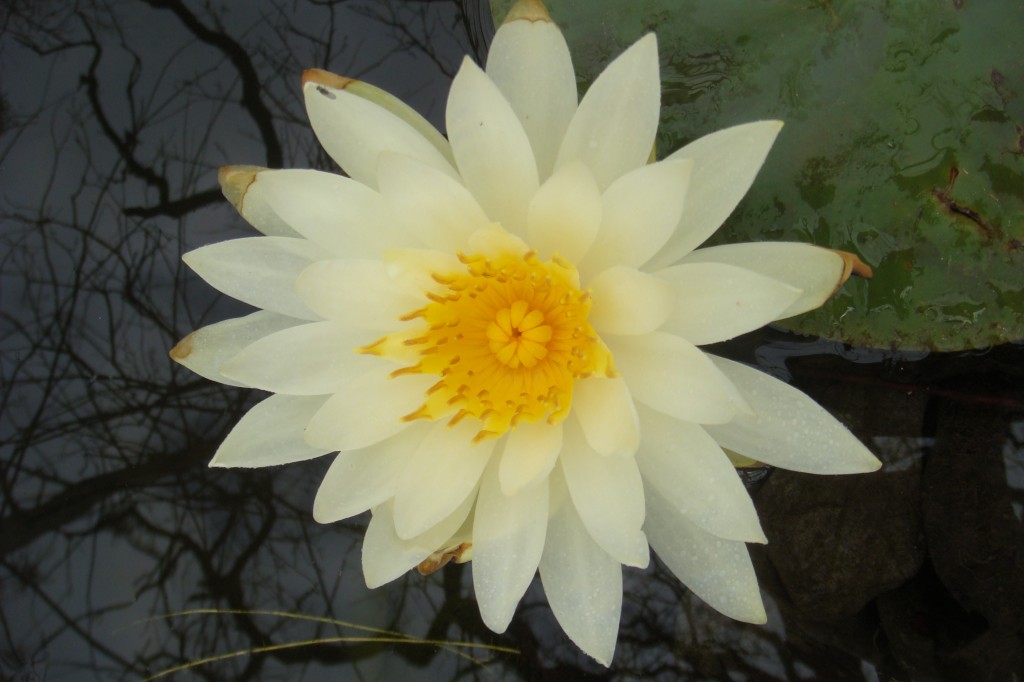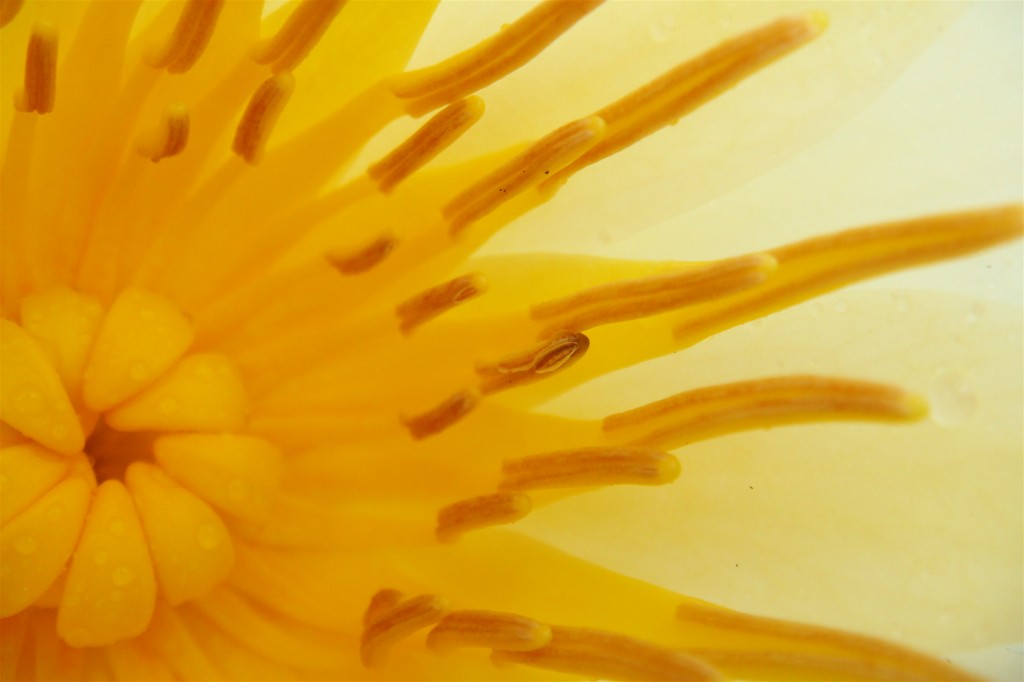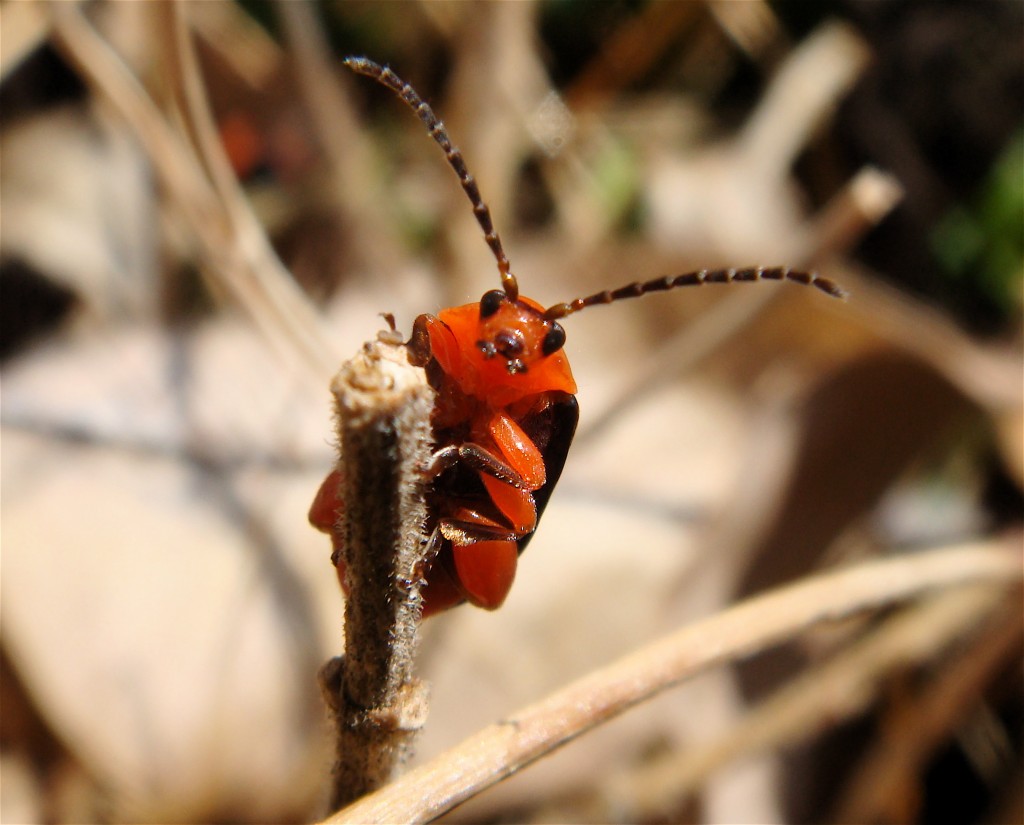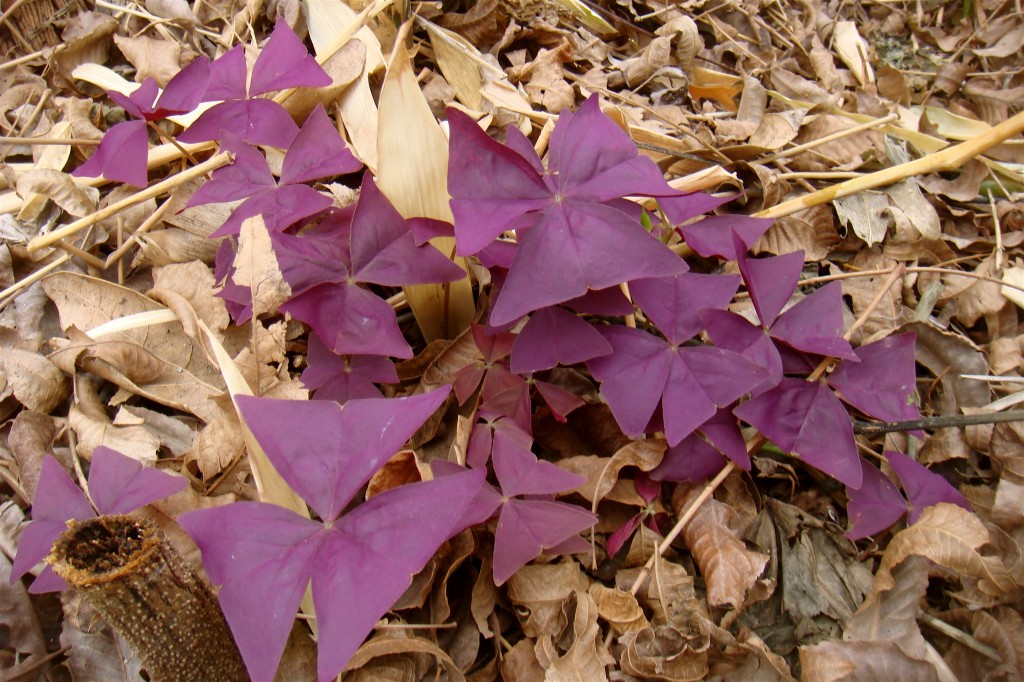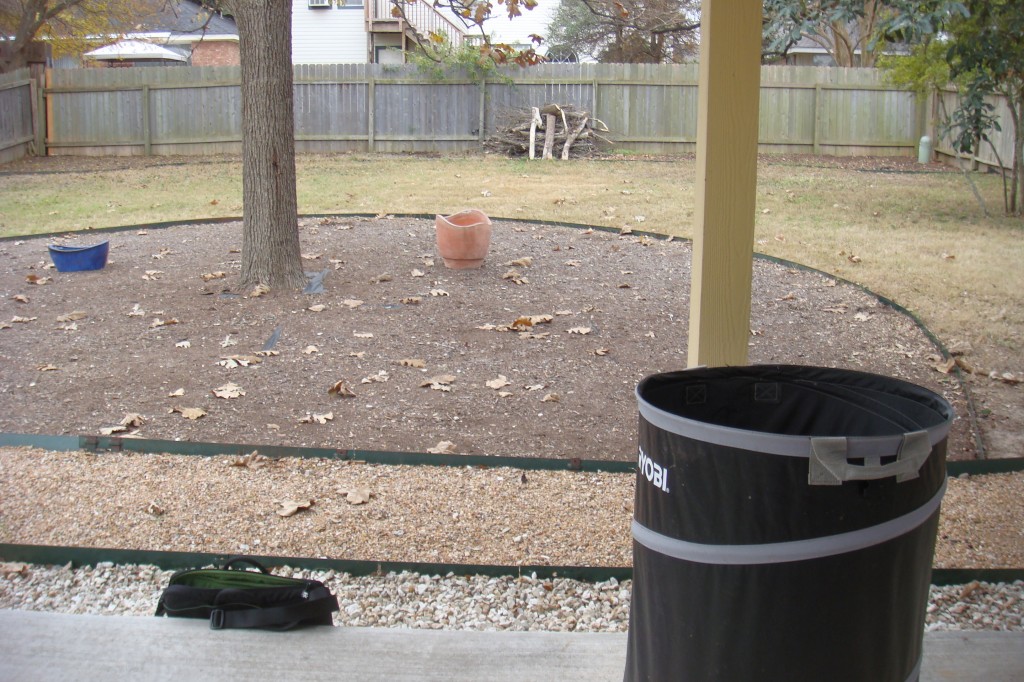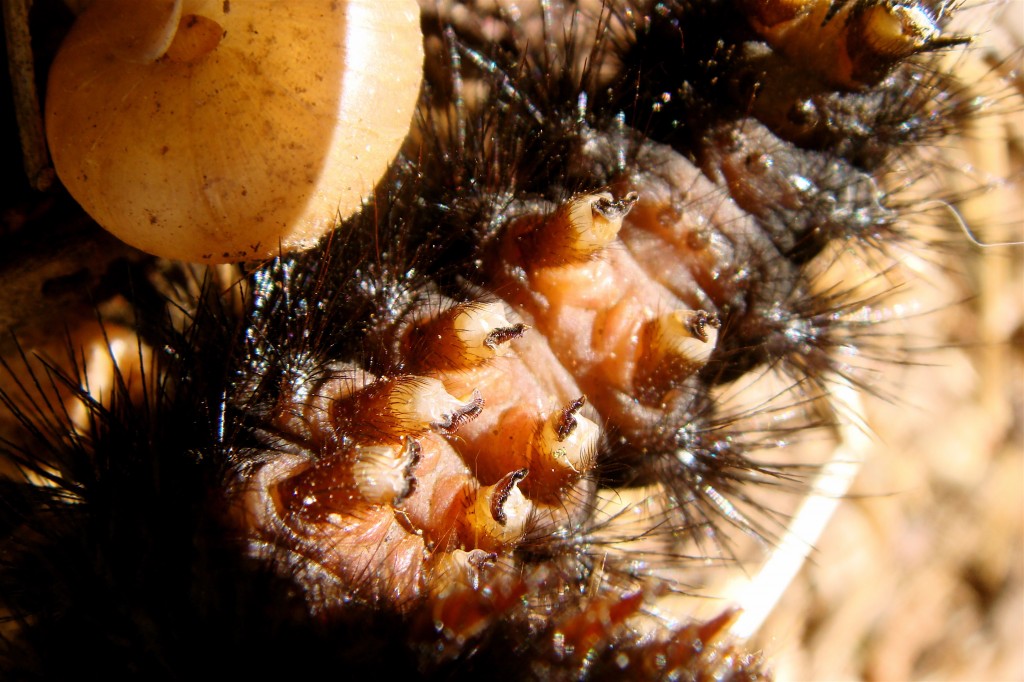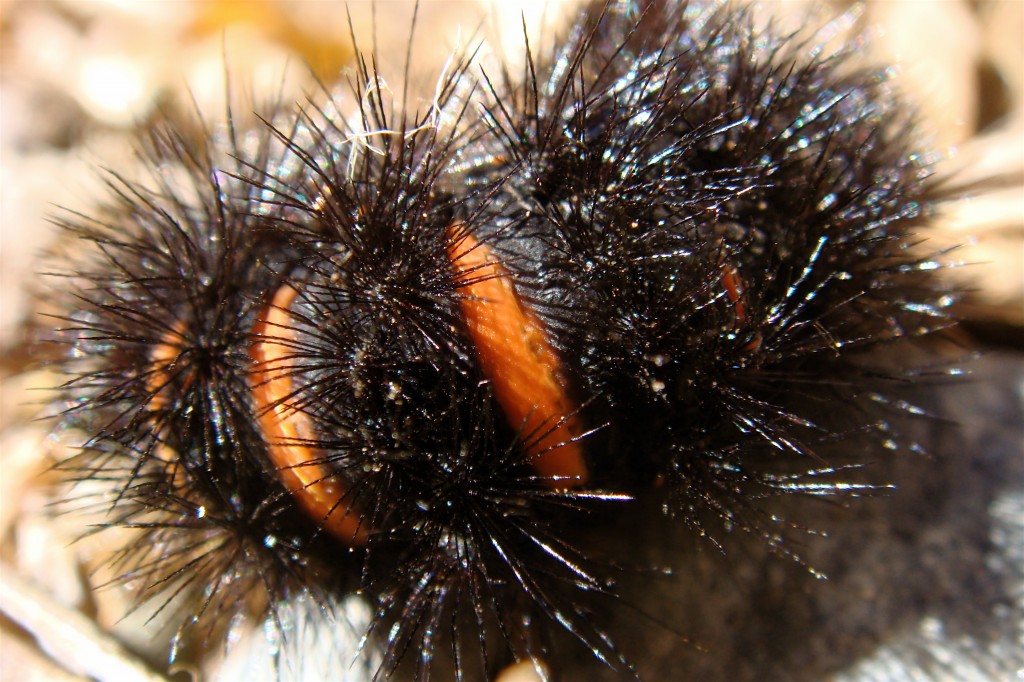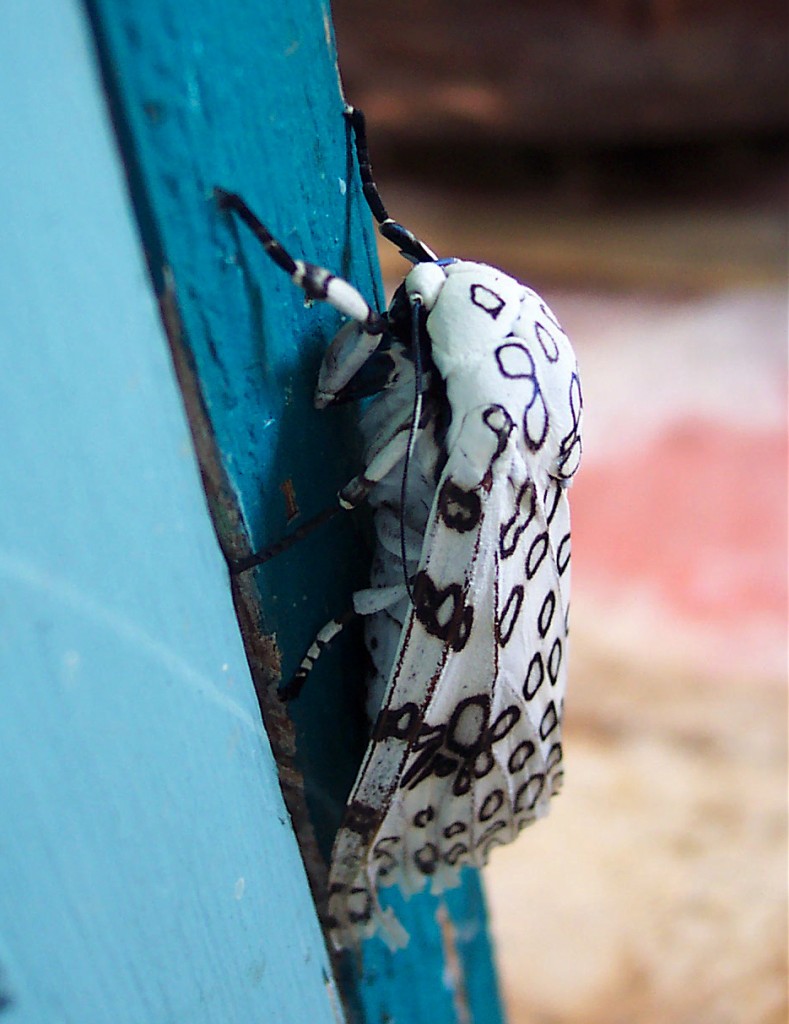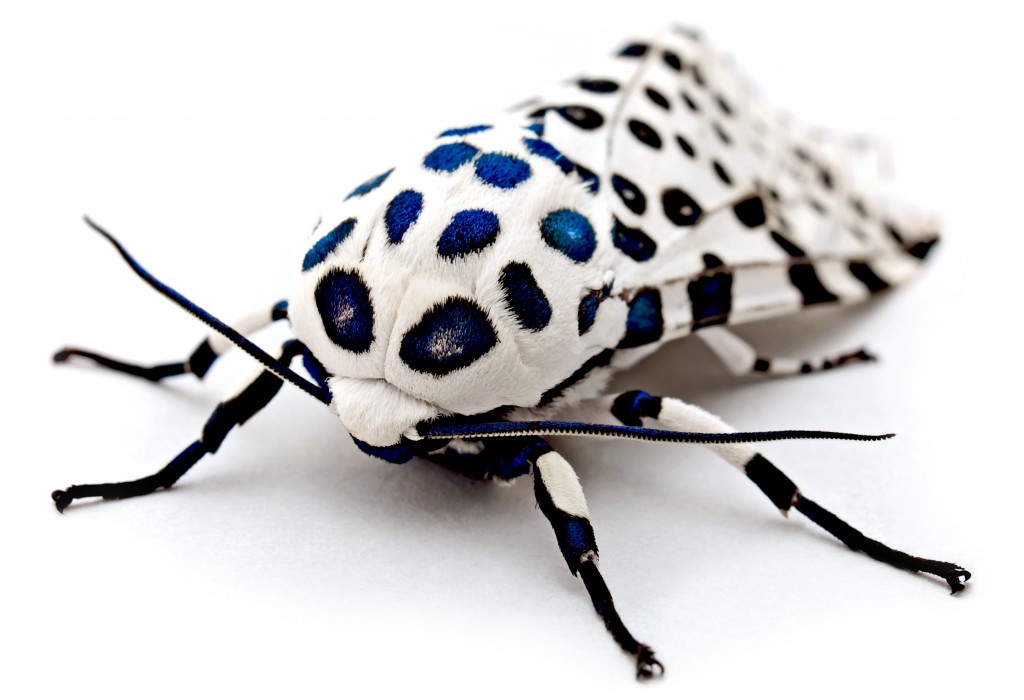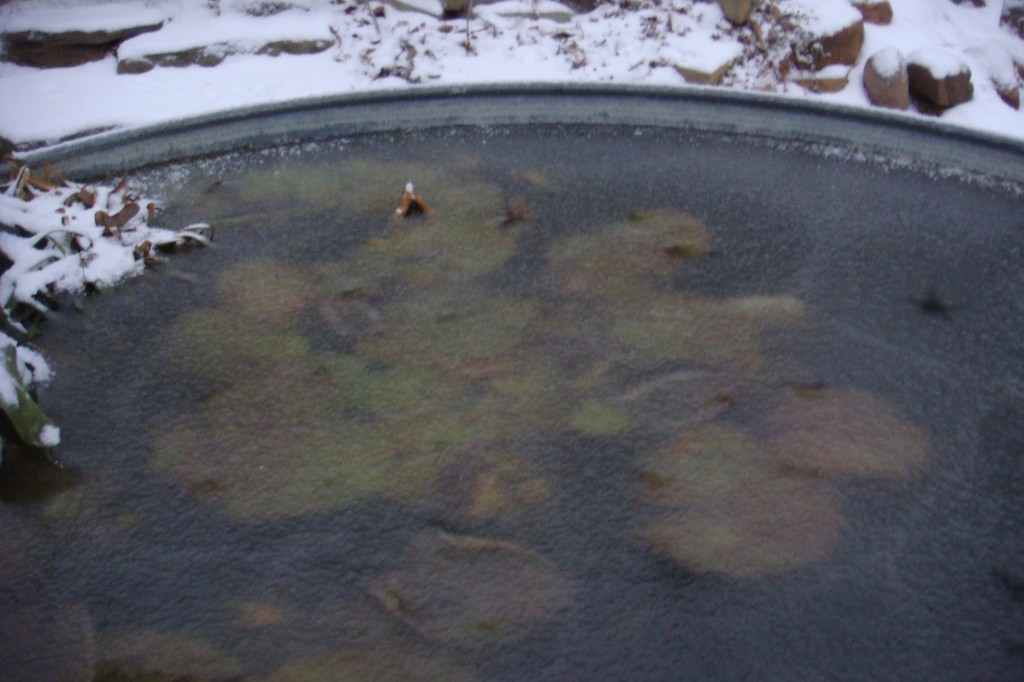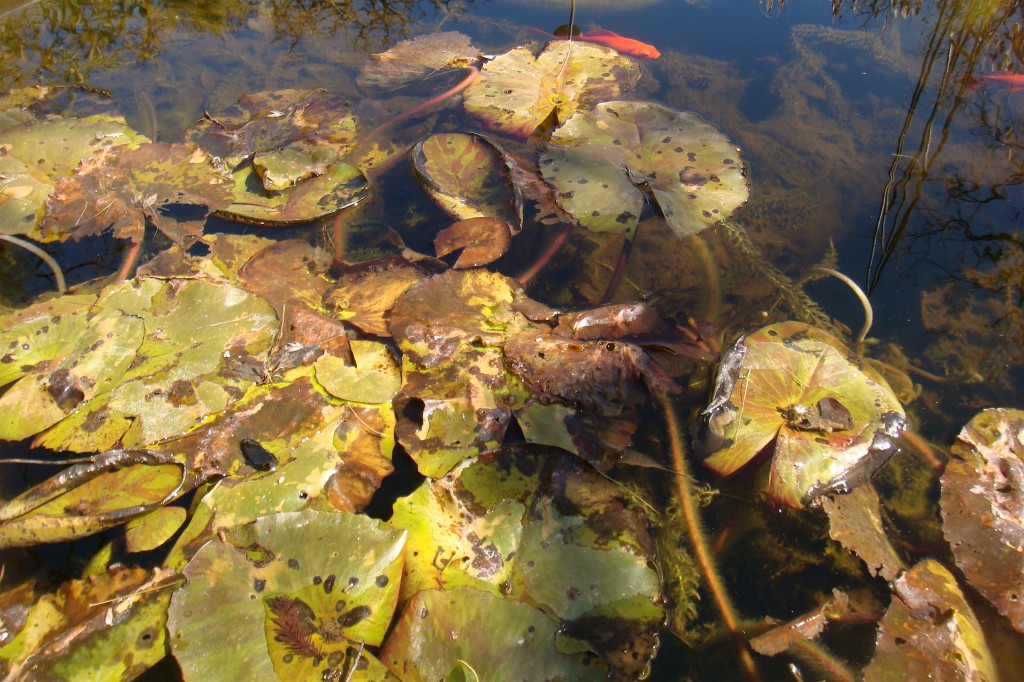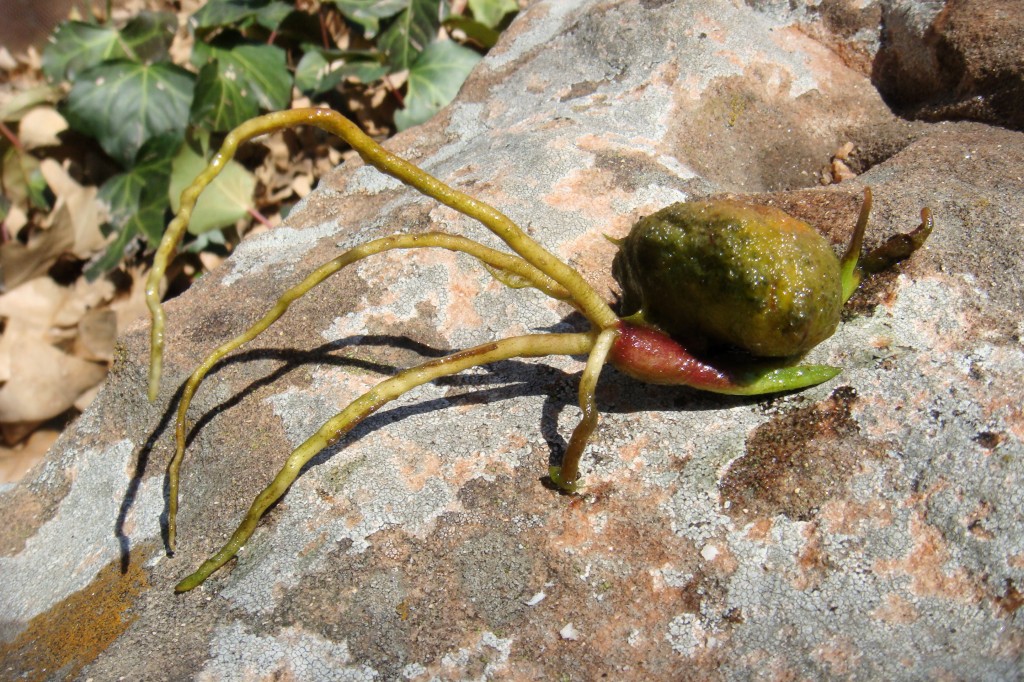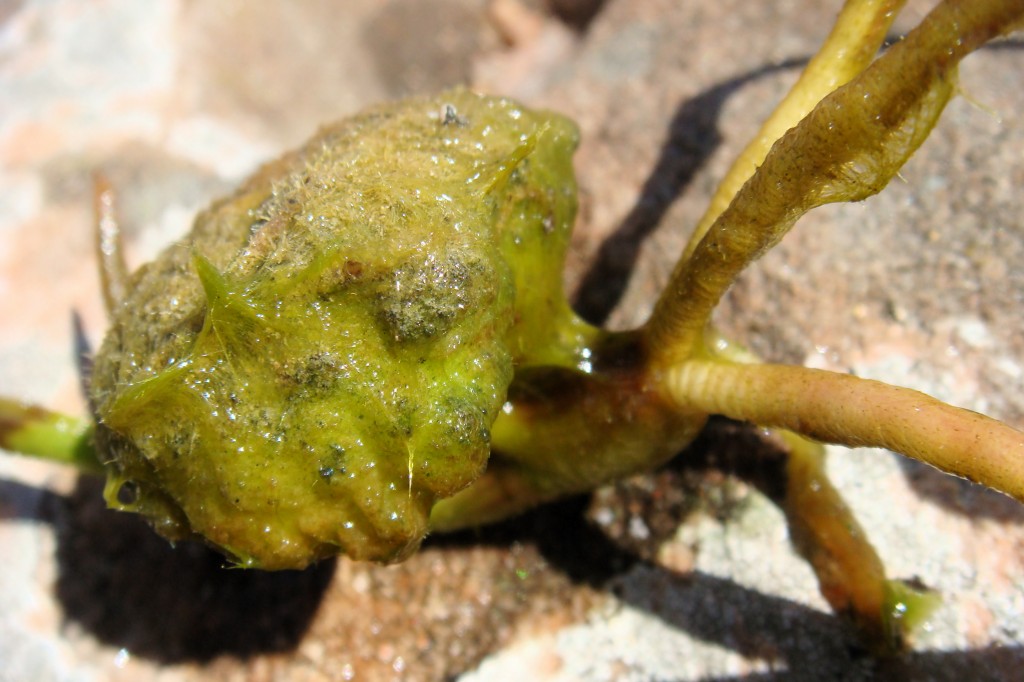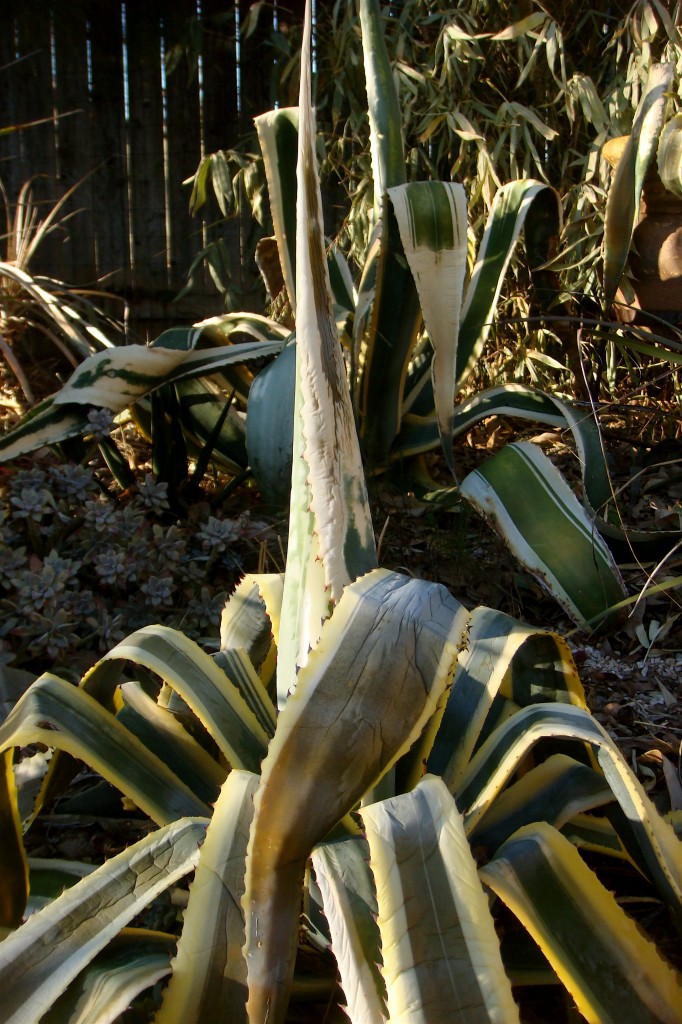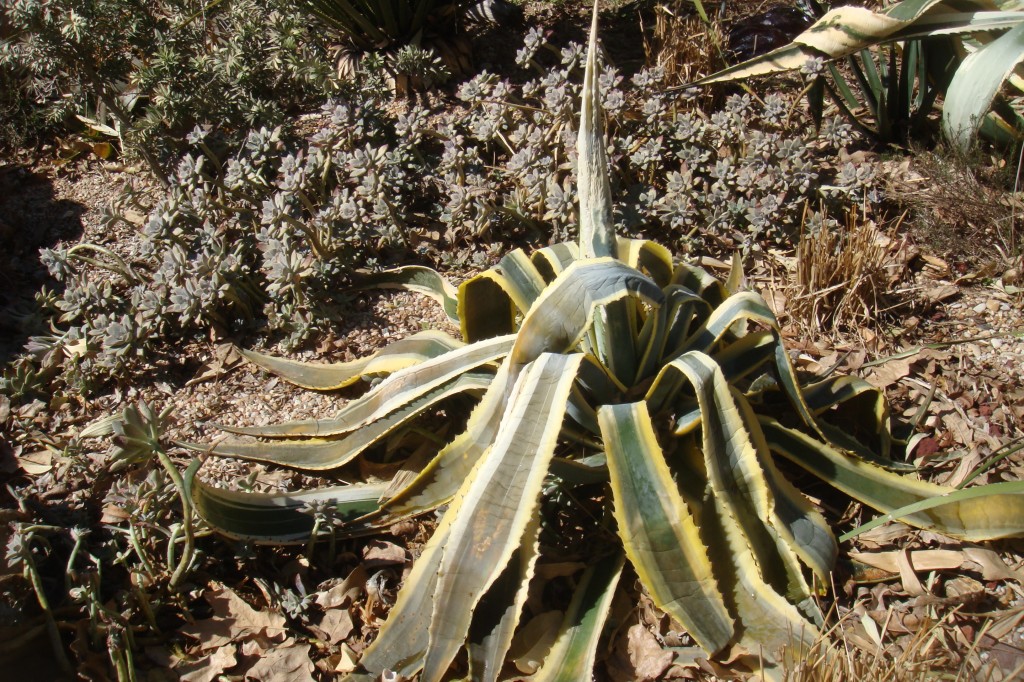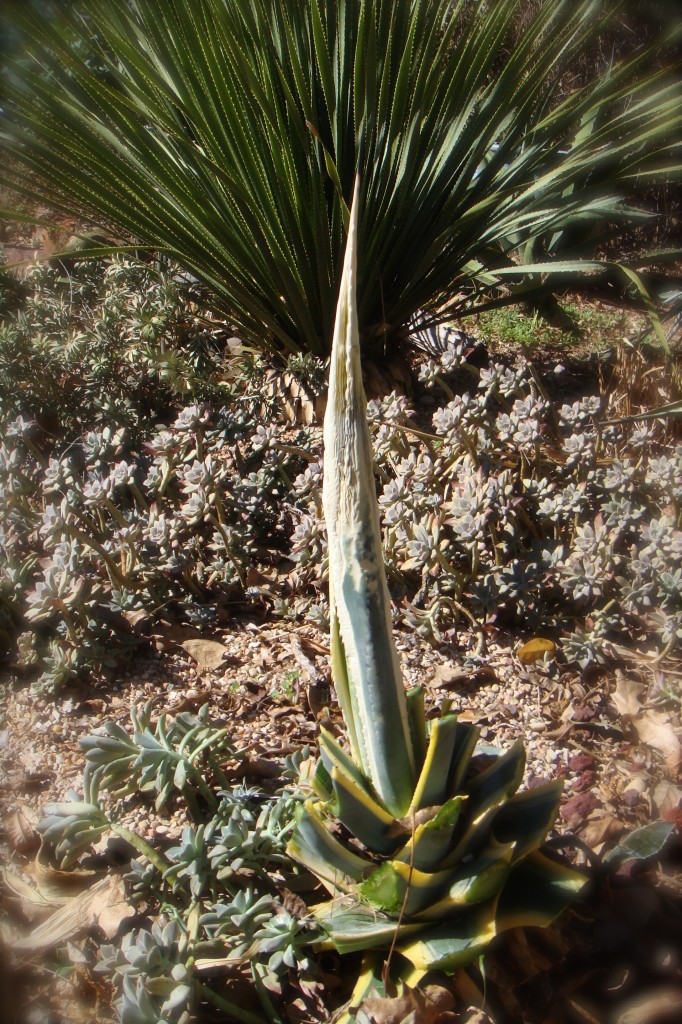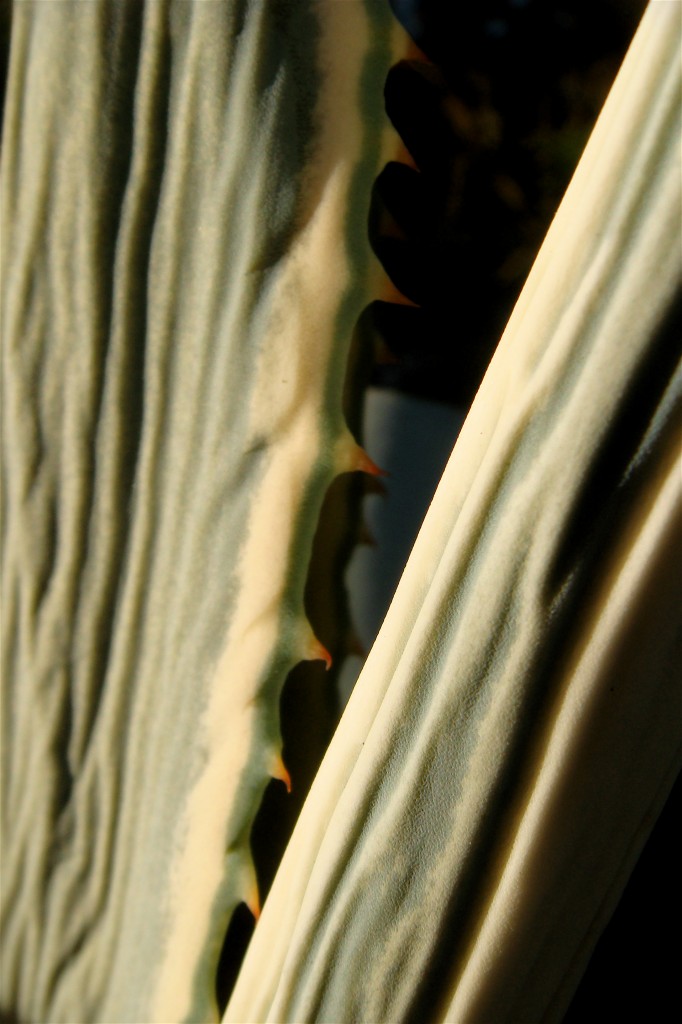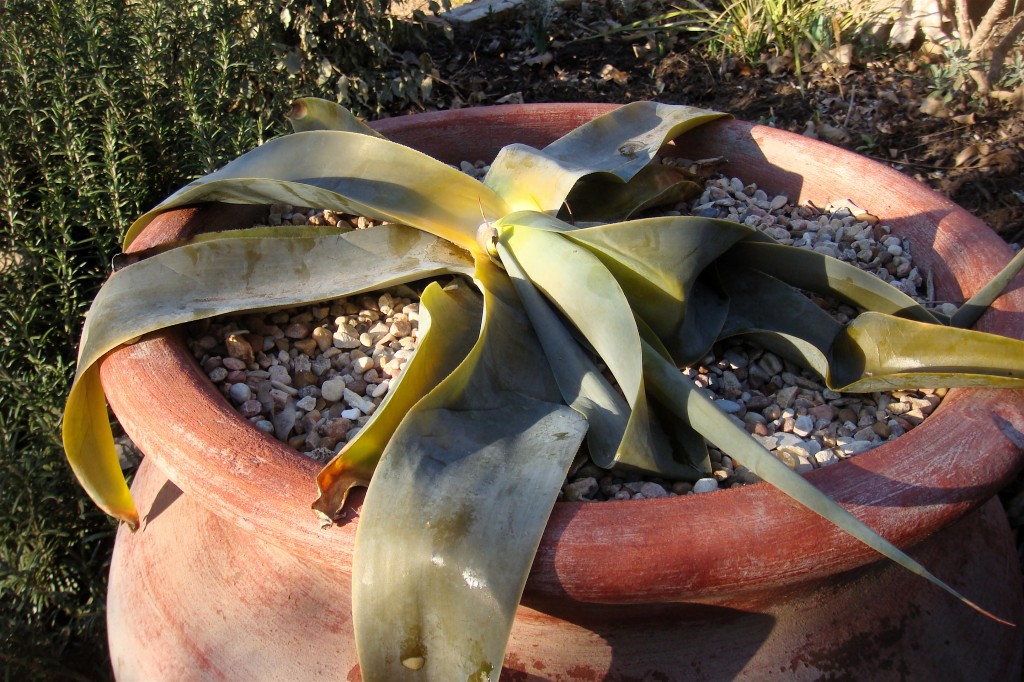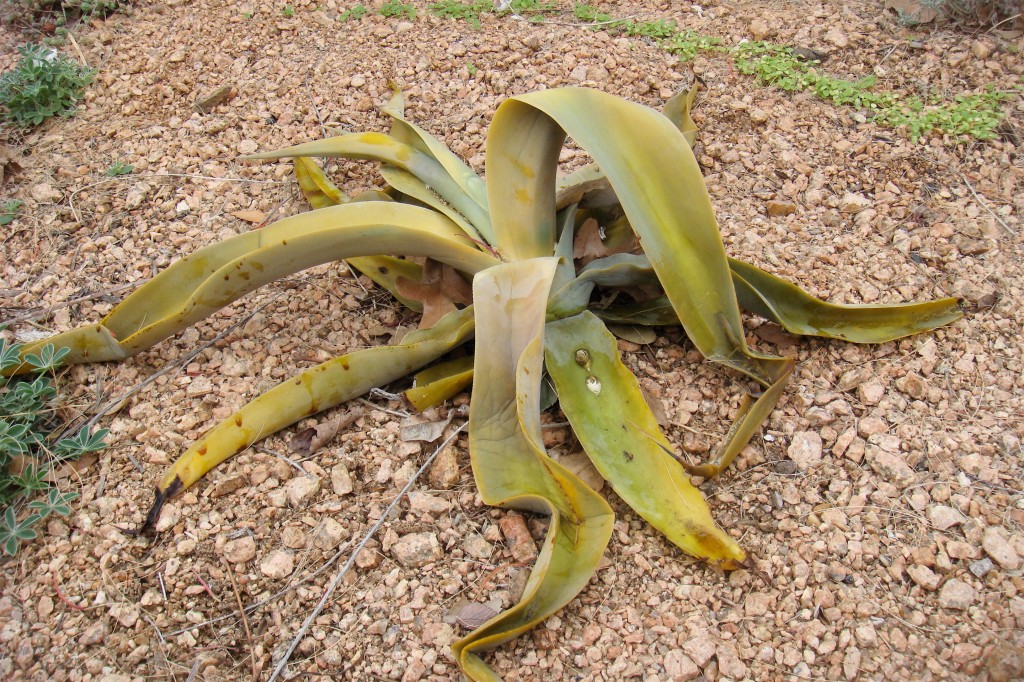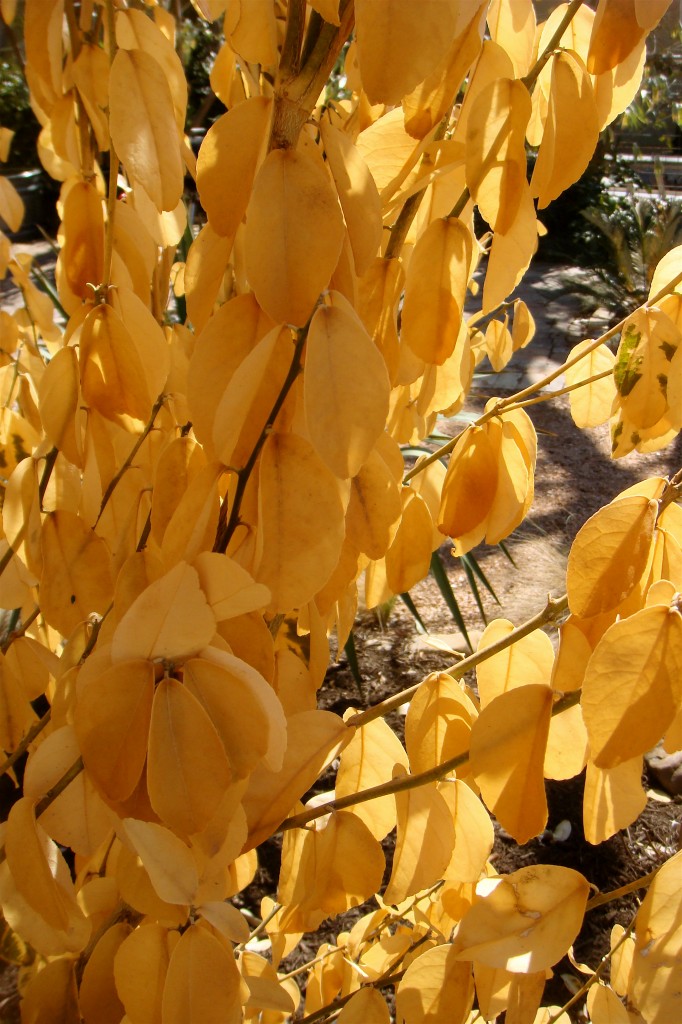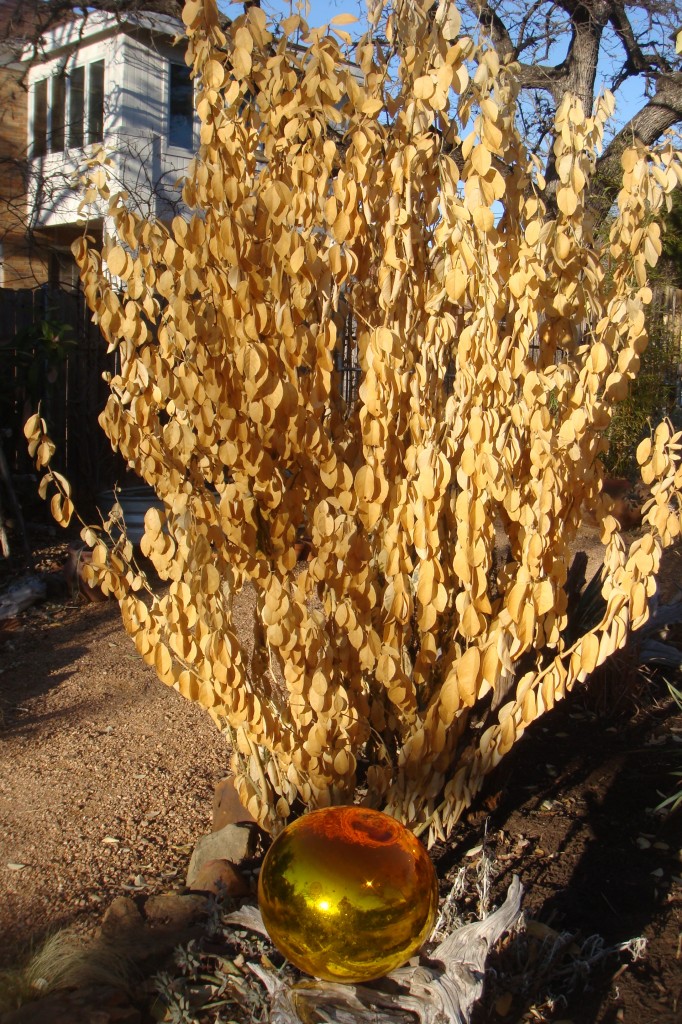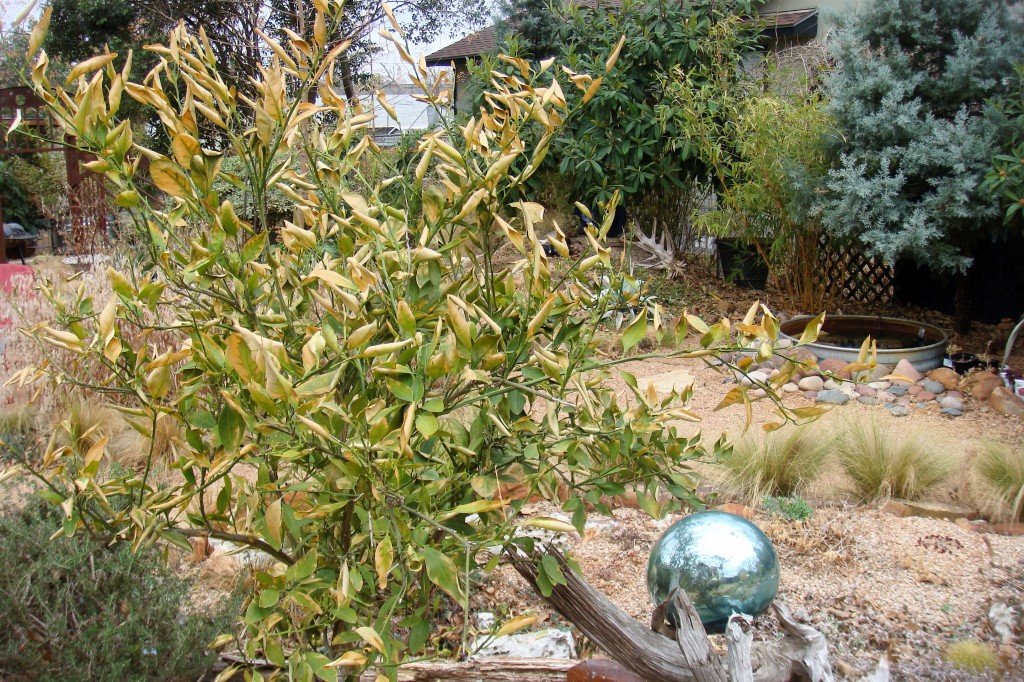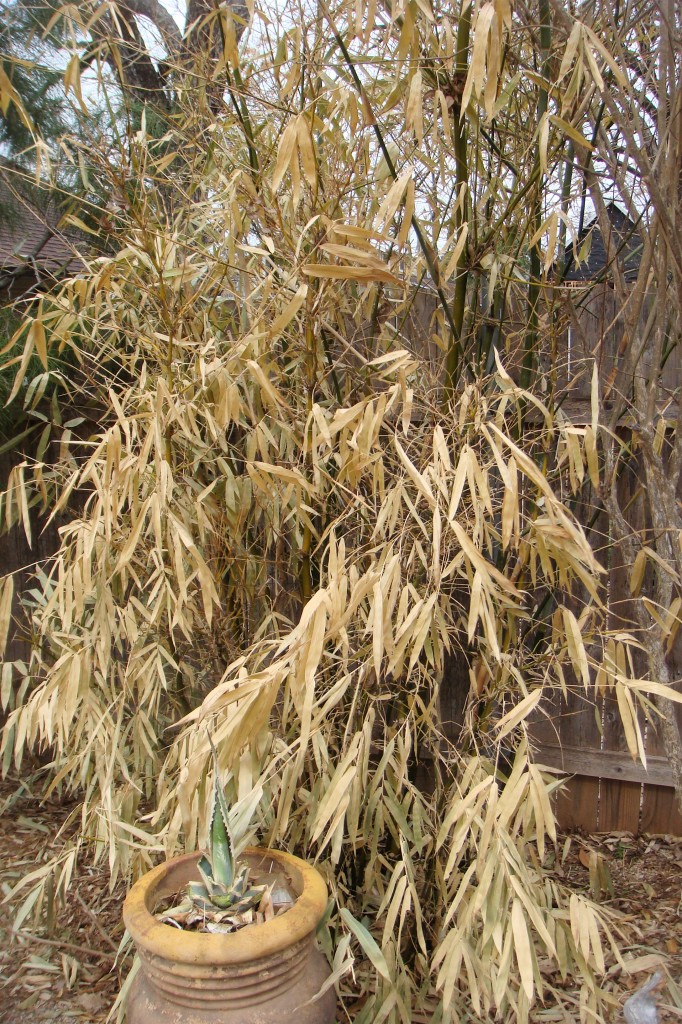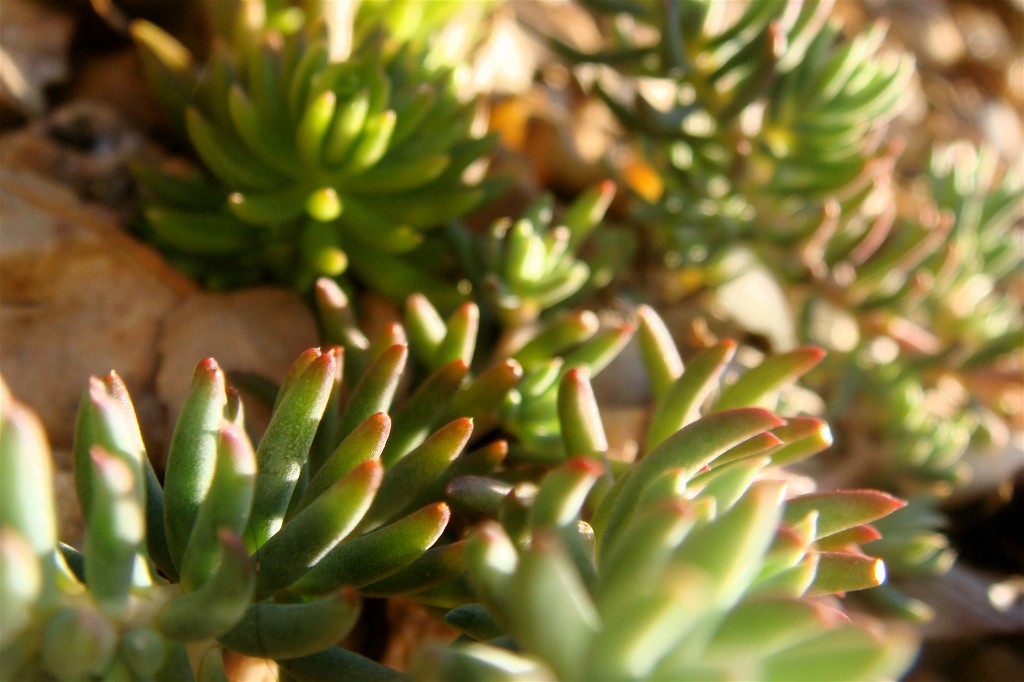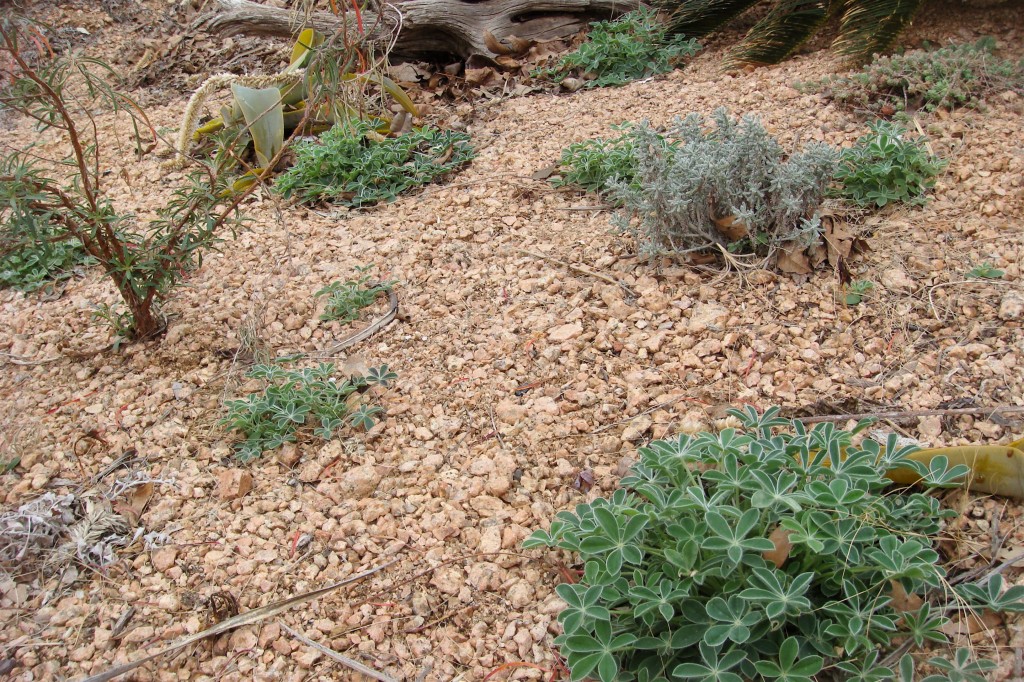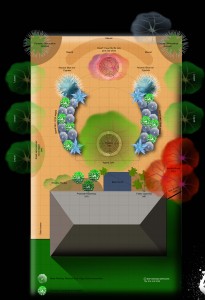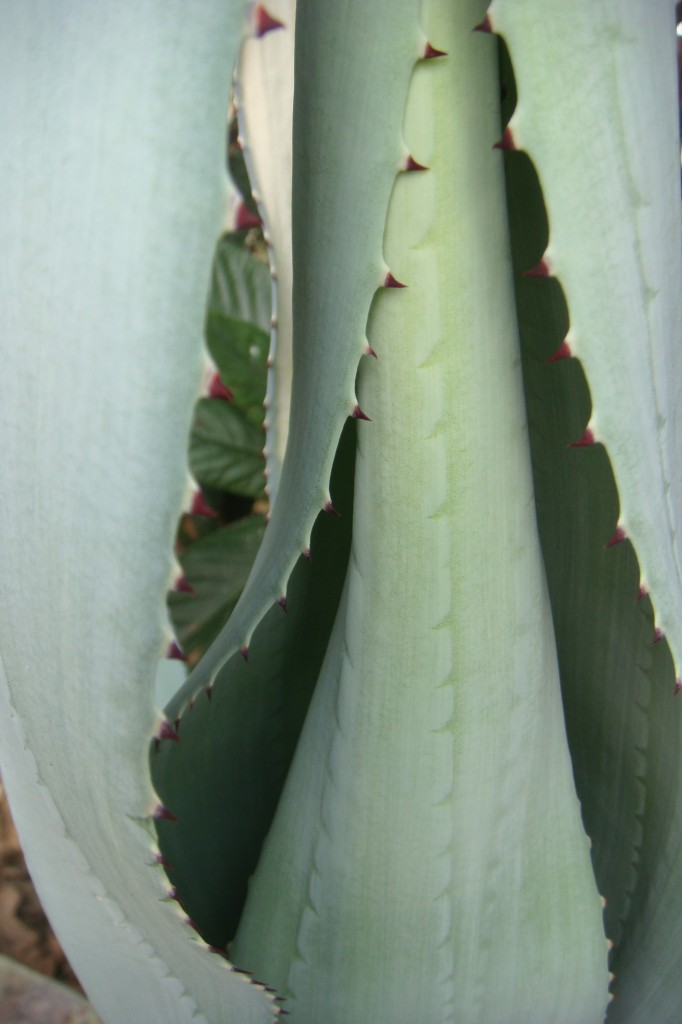
And the curtains open once again on another mad cold / warm weather-week in the patch, but spring is most certainly in the air, I can smell it.
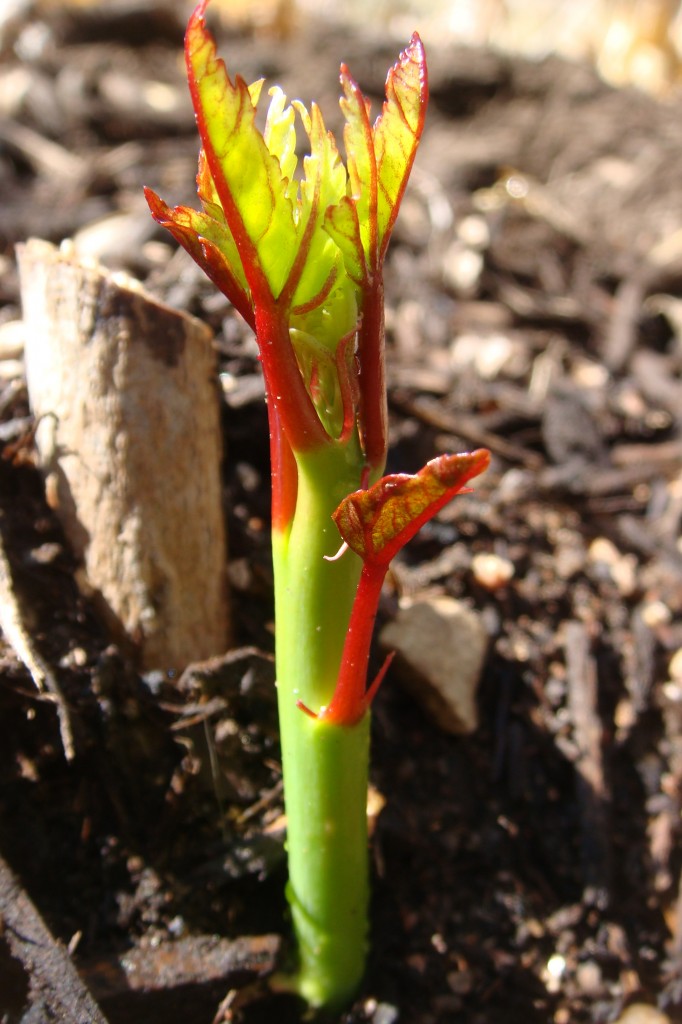
Mysterious plants are once again on the rise,
narcissus are blooming,
and when the sun is shining the anoles are out and lounging in large numbers, warming their cold winter bones.
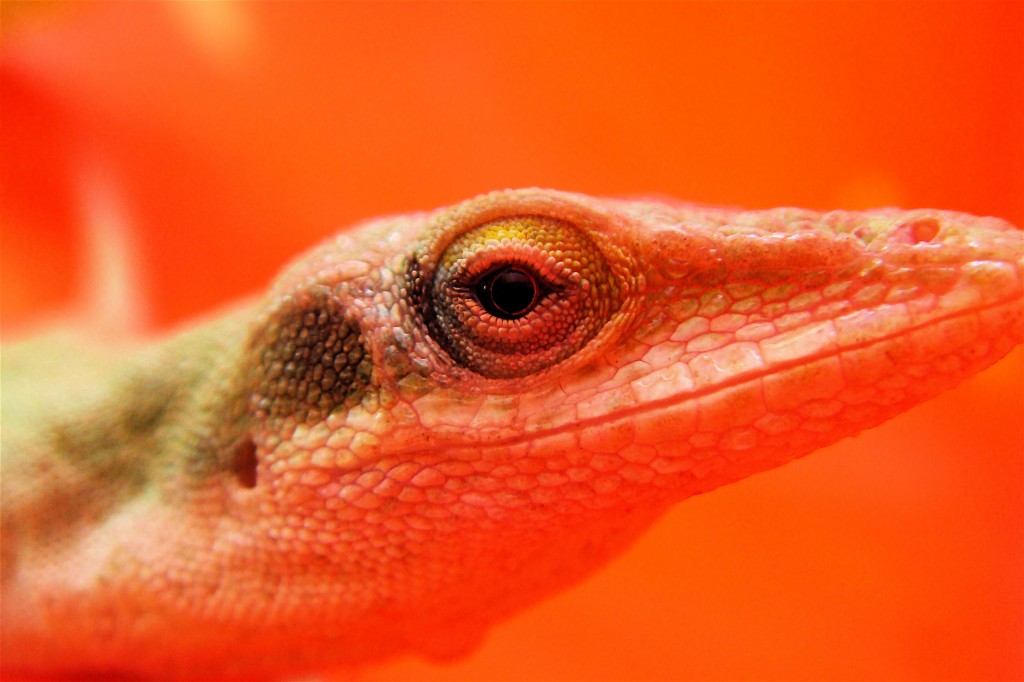
“Ahh, so much better”.
I found this one in an orange water bucket, hence the rather “warm” background,
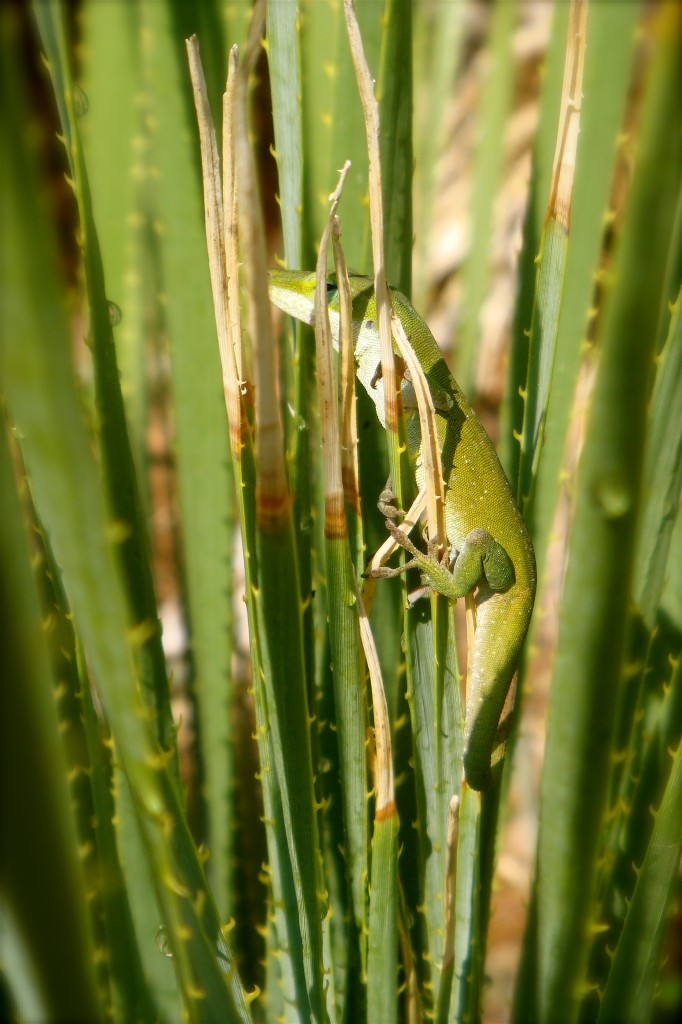
and another catching some rays deep in the center of this large sotol, a perilous place.
I even had a rogue water lily bloom this week, a sure sign we must be on the gradual warm-up. I will be moaning about tying an iced turban in no time at all.
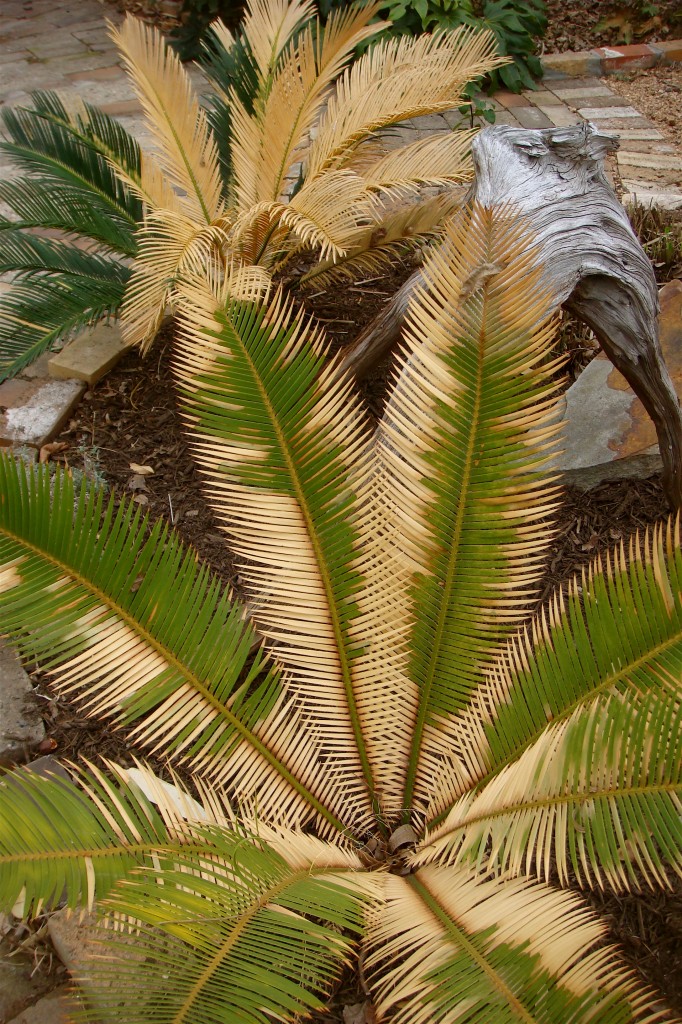 Something these sago palms are, by the looks of them, desperately looking forward to (the heat, not the turban tying). As you can see the king (top) and the Prince (lower) are in a regal crises, their robes threadbare, their crowns non-existent.
Something these sago palms are, by the looks of them, desperately looking forward to (the heat, not the turban tying). As you can see the king (top) and the Prince (lower) are in a regal crises, their robes threadbare, their crowns non-existent.
Moving on…
 I moved a large container this week that appeared to be somewhat of a sanctuary for a bunch of these…
I moved a large container this week that appeared to be somewhat of a sanctuary for a bunch of these…
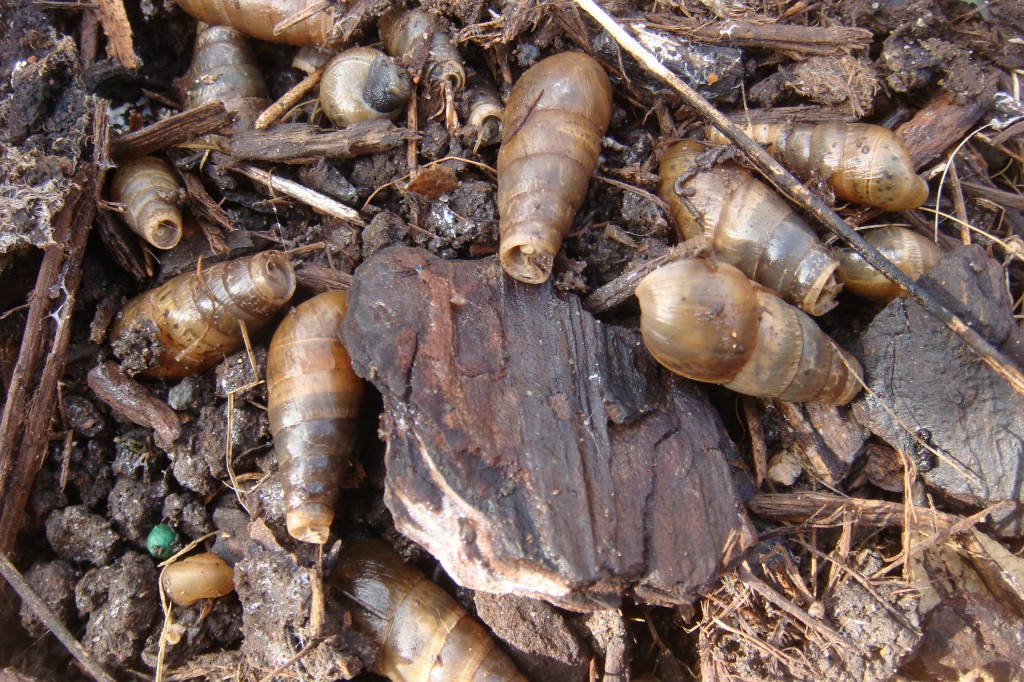 living and hunting under it, decollate snails,
living and hunting under it, decollate snails,
Rumina decollata
(Linnaeus 1758). When these elongated snails are about 10 mm long, they strangely lose the top 3 whirls of their shells! They are also quite fond of snail cannibalism (not the same species). Nothing makes this snail’s stomach rumble more, than the mouth-watering thought of a young and succulent common garden snail for Sunday dinner…for this reason decollate snails are most welcome gastronomes in the Patch.
 According to the experts, Decollate snails may nibble young plants, but they prefer a heartier, more substantial meal if given the choice, and the younger the snail the better. They even devour the eggs of regular garden snails like ikura.
According to the experts, Decollate snails may nibble young plants, but they prefer a heartier, more substantial meal if given the choice, and the younger the snail the better. They even devour the eggs of regular garden snails like ikura.
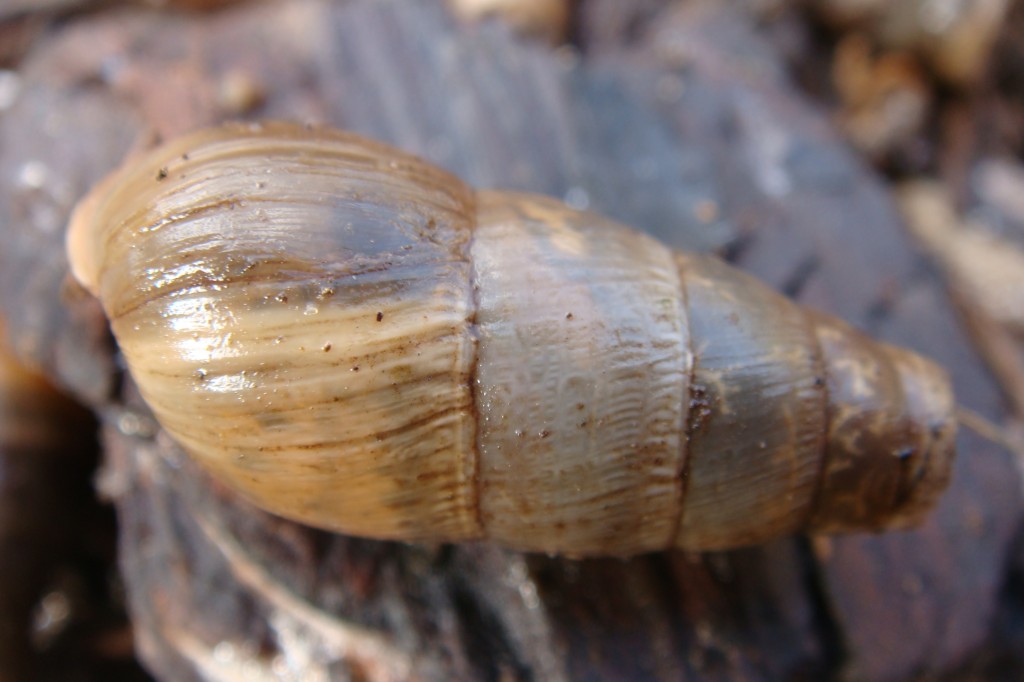 Sometimes referred to as destroyer snails, these snails can eat a brown snail from the inside-out (brrr)…a true and veracious predator.
Sometimes referred to as destroyer snails, these snails can eat a brown snail from the inside-out (brrr)…a true and veracious predator.
 “I am beginning to (insert Lector noises right about here) like these decollates“.
“I am beginning to (insert Lector noises right about here) like these decollates“.
The only states that allow purchase and release of these snails are Arizona, Texas, New Mexico and California (selected counties only), around $230 for around a 1000!
 Disturbing image courtesy of associatesinsectary.com
Disturbing image courtesy of associatesinsectary.com
 A regiment of rumina decollata getting down to culinary business, bibs already on, escargot forks at the ready! I am just glad I am not that brown garden snail.
A regiment of rumina decollata getting down to culinary business, bibs already on, escargot forks at the ready! I am just glad I am not that brown garden snail.
On an even more disturbing note, I believe a curse has been placed on the residents of the ESPatch.
“I knew it would happen…didn’t I tell you”?
At about the 4:15 everyday this is is when the curse seems to kick in,
all of our feet grow to ridiculous proportions (to apparently aid stability) then it is off to work, breaking through lumber, bricks and concrete to the accompanying sounds of “Heh, huh, huh” “snort” and “squawk”! What manner of curse is this?
 “It does look like a particularly nasty one Sir”?
“It does look like a particularly nasty one Sir”?
“Agreed”.
We all soon start to regress, turning on each other and eventually snatching, grabbing and clawing at any iPhone in reach, “m…m…my turn…HEY IT’S MY T”…etc, etc, etc.
The curse lifts apparently only with the onset of dinner and dead iPhone batteries.
Finally…
Oxalis is looking very saturated right now.
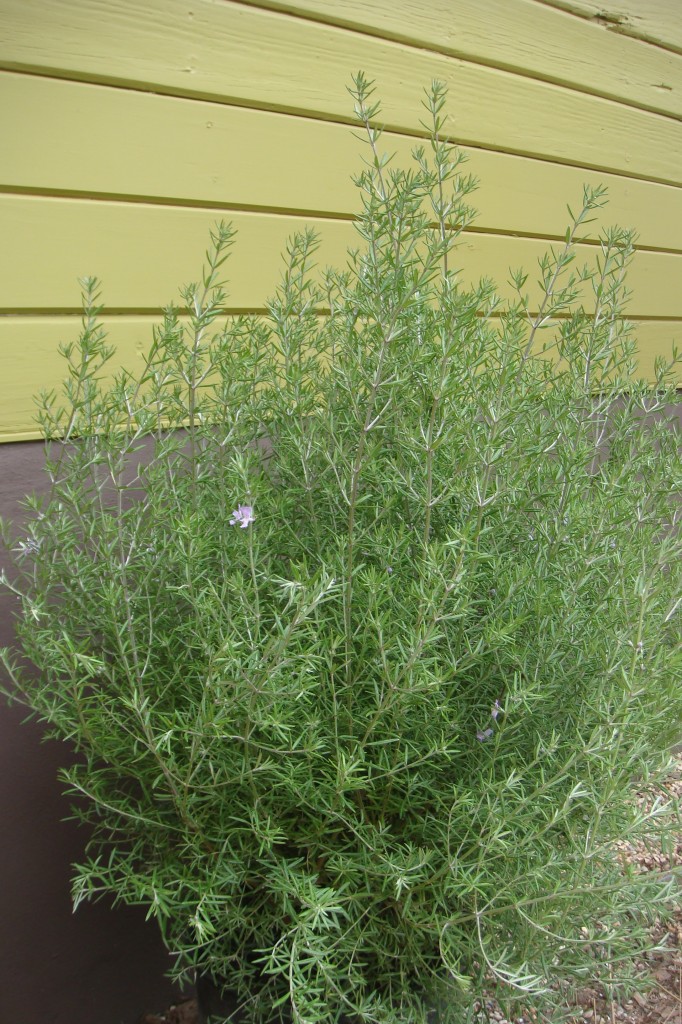
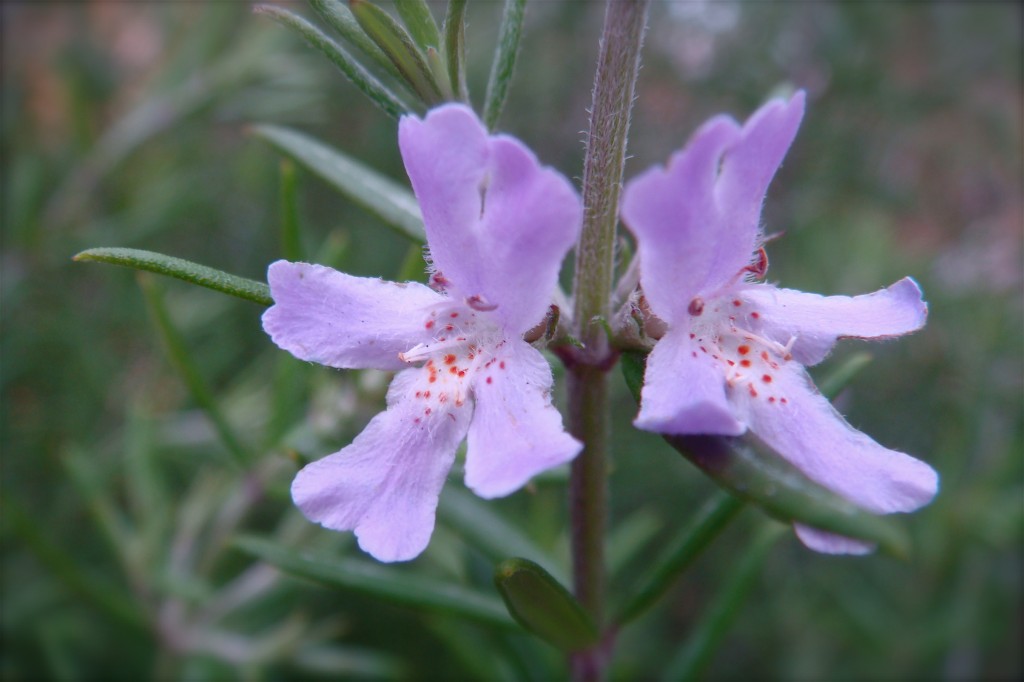 The latest addition to the Patch : Coastal Rosemary,
The latest addition to the Patch : Coastal Rosemary,
Westringia fruticosa
‘Wynyabbie Gem’, an Australian native. Terrific fine rosemary-like foliage with small clusters of attractive mauve-pink flowers that appear throughout the year. In stark contrast to regular rosemary this shrub has absolutely no fragrance whatsoever. It is a fast growing upright and dense growing shrub that can reach an astonishing 6-8 feet tall by 6 feet wide…now that is my kind of rosemary!
This one is destined for future expansion in my hell-strip.
Before:
And after:
 Backbone in, mine slightly out!
Backbone in, mine slightly out!
Garden Design. South Austin…
Done!
Stay Tuned for:
“Up Front”
All material © 2011 for eastsidepatch. Unauthorized
intergalactic reproduction strictly prohibited, and
punishable by late (and extremely unpleasant)
14th century planet Earth techniques.
